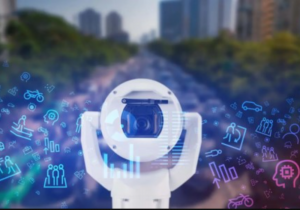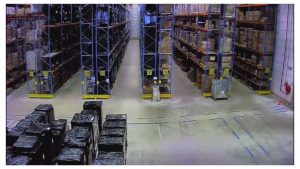With phenomenon of hybrid world fast catching up with businesses across the globe, most technology solution offerings have also begun taking shape as ‘service,’- catering to specific aspects of operations as singly, or in combination. While AV as holistic offering itself is being taken for consideration as a service, with IoT following closely, now diverse aspects of AV are coming to marketplace as a specific service component. Video Surveillance is one, being brought forth by security surveillance solutions behemoth Bosch.
……………………………………………………
With security concerns becoming increasingly challenging, the demand for video surveillance continues to grow worldwide as organizations seek to increase the security and safety of their people and property. Searching solutions that scale with their operations – while minimizing investment – has been a big challenge for companies, especially those operating from multiple locations.
Video surveillance as a service (VSaaS) is taken to be an easily scalable solution that addresses these needs in an integrated fashion. It helps users to monitor, manage, record, and replay video security footage from anywhere via the cloud.
 The VSaaS – as brought to the fore by Bosch – involves cameras as the only hardware investment needed on-site, with many benefits to businesses, especially remote and unstaffed locations such as energy and construction sites. Since Bosch handles the video surveillance service and video storage happens on the cloud, hardware required on location is very little. The capital expenditure, therefore is effectively minimized. It also eliminates maintenance and reduces expensive site visits for storage equipment and server upkeep.
The VSaaS – as brought to the fore by Bosch – involves cameras as the only hardware investment needed on-site, with many benefits to businesses, especially remote and unstaffed locations such as energy and construction sites. Since Bosch handles the video surveillance service and video storage happens on the cloud, hardware required on location is very little. The capital expenditure, therefore is effectively minimized. It also eliminates maintenance and reduces expensive site visits for storage equipment and server upkeep.
Businesses can operate the alarm management services and cloud storage directly or outsource to a Security Operation Center (SOC). The SOC will monitor all events across multiple sites 24/7 and deploy the appropriate measures ensuring peace of mind to business process owners. Whatever the choice, businesses can monitor remote locations and unstaffed sites from anywhere. They only need deploy measures or personnel, such as security guards when necessary, for additional cost savings.
Instead of monitoring video footage 24/7, VSaaS by Bosch alerts only when needed by combining AI at the edge, and in the cloud.
This VSaaS by Bosch works with Bosch third-party cameras, offering agnostic video analytics at the edge. From Bosch, all its IP cameras come with built-in video analytics – a form of AI – to help them autonomously detect pre-defined situations and trigger the Cloud-based alarm management service.
 In a demanding situation, the Cloud service will alert users to take appropriate action. More, the meticulously built AI capabilities enable the Bosch cameras to differentiate between real security events and false triggers such as snow, wind (moving trees), rain, hail, and water reflections that render video data interpretation difficult. This capability, therefore, minimizes false alarms, saving on time and money.
In a demanding situation, the Cloud service will alert users to take appropriate action. More, the meticulously built AI capabilities enable the Bosch cameras to differentiate between real security events and false triggers such as snow, wind (moving trees), rain, hail, and water reflections that render video data interpretation difficult. This capability, therefore, minimizes false alarms, saving on time and money.
According to Bosch, its VSaaS enables users to monitor, manage, record, and replay video security footage directly in the cloud from anywhere. It helps site managers, security operators, or operations staff make quick decisions, especially from remote locations, when faced with events, thereby preventing them from becoming incidents. |
Nevertheless, an actual alarm can still be unwanted based on the customer applications. It typically involves high costs because some response is needed.
An AI-based alarm verification service is planned for the second half of 2022 to complement the VSaaS offering, declare the security major. The service is designed to tailor alerts and filter unwanted alerts that don’t meet the requirement of the intended application. For example, an animal detected by the camera alongside a perimeter is a valid alert, but unimportant for perimeter security. The planned AI-based alarm verification service will filter such unwanted alerts. The advantages of the service are minimizing false alarms, reducing costs, and strengthening the reliability of the security application.
Benefits of VSaaS by Bosch:
VSaaS by Bosch empowers users to improve operational efficiency, identify actionable insights with built-in Video Analytics on Bosch cameras, and gain a solid return on investment that delivers greater value across the entire organization.
 Improved operational efficiency: Once cameras are deployed, all software maintenances, configuration settings and related processes are handled remotely. Users can easily and securely access and manage their live views and recordings anytime and anywhere from any smartphone, tablet, or computer for improved flexibility and operational efficiency.
Improved operational efficiency: Once cameras are deployed, all software maintenances, configuration settings and related processes are handled remotely. Users can easily and securely access and manage their live views and recordings anytime and anywhere from any smartphone, tablet, or computer for improved flexibility and operational efficiency.
Cost-effective: No servers are required to install, update, or maintain so businesses can quickly realize the cost-effectiveness of their investment. The only hardware needed are cameras, and businesses pay for only the services they use. They can add cameras where and when they need them and extend cloud storage depending on storage requirements and retention time needs. The flexible concept allows users to adapt a security solution that meets their budgets and needs. The intended AI-based alarm verification service will make it possible to tailor alerts to a customer’s needs, filtering unwanted alarms, increasing efficiency, and minimizing costs.
A future-proof and secure investment: While Bosch continues to invest to further develop its cameras with AI running at the edge and in the cloud, future cloud services and camera firmware updates ensure that the video system becomes more intelligent over time. This evolution is assured to minimize unwanted alarms and delivers predictive insights enabling users to tailor solutions to specific customer needs.
Ready to connect: All Bosch IP cameras can securely connect to the cloud to build a secure ecosystem that supports remote monitoring, management, maintenance, and the VSaaS. System integrators can work with their clients remotely via Bosch’s cloud-based device management service, and perform services such as changing configuration settings or installing firmware updates, towards ensuring that the system meets the highest security standards.





















